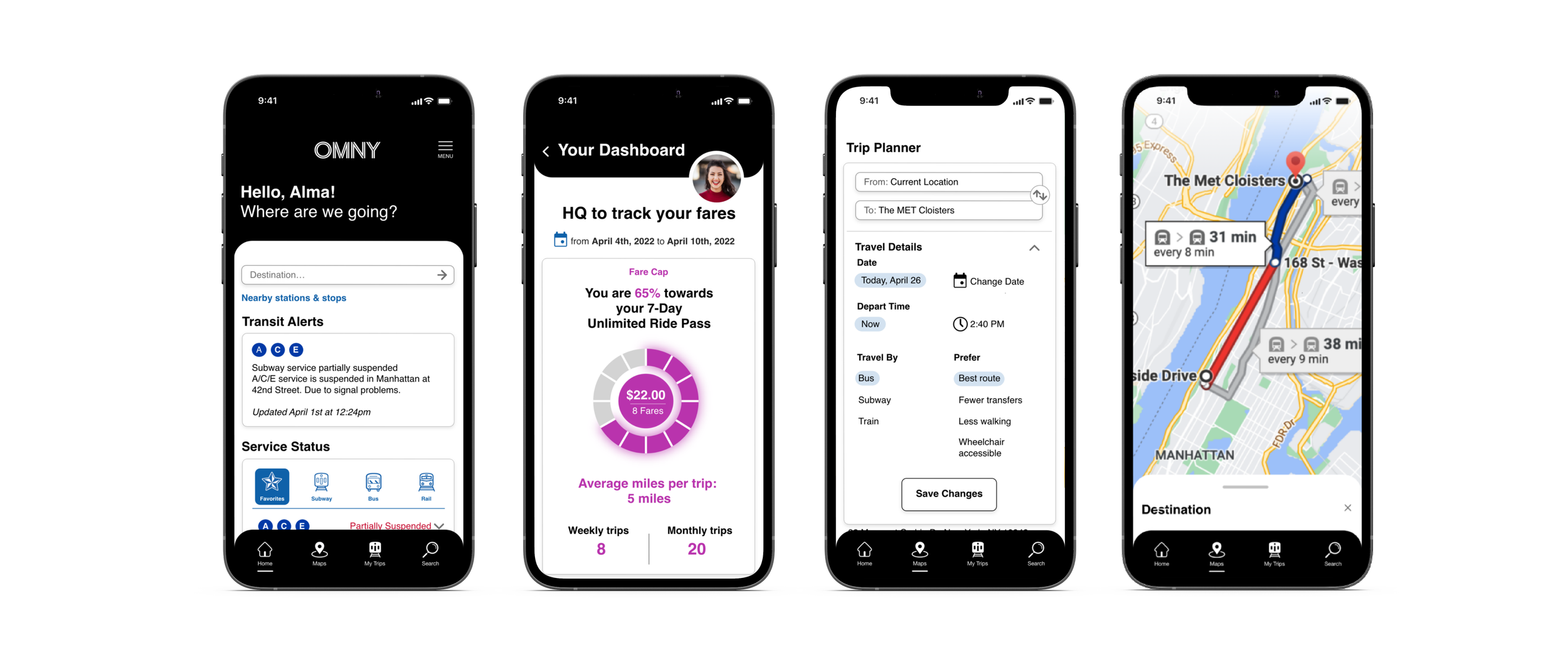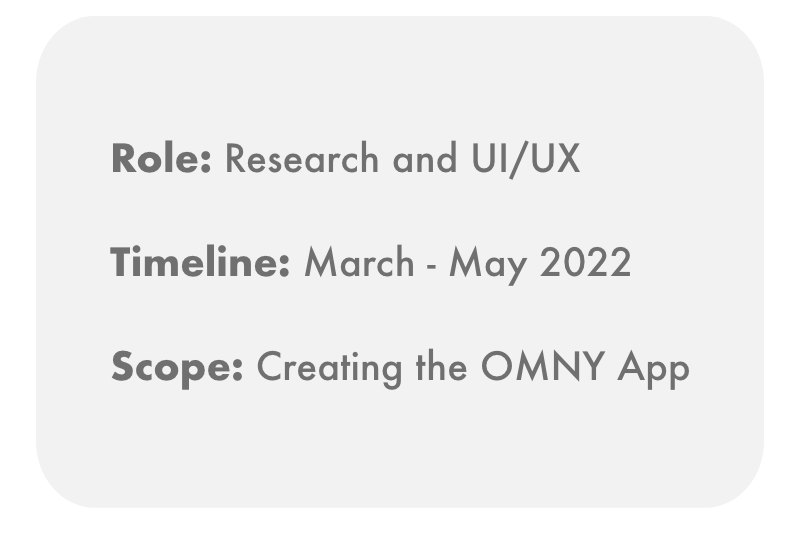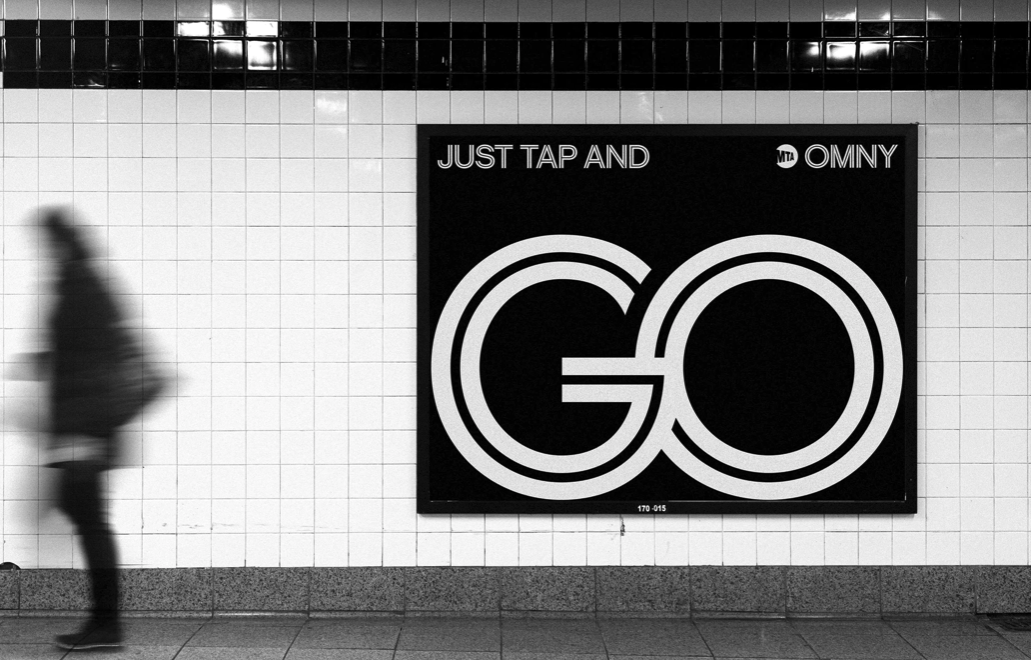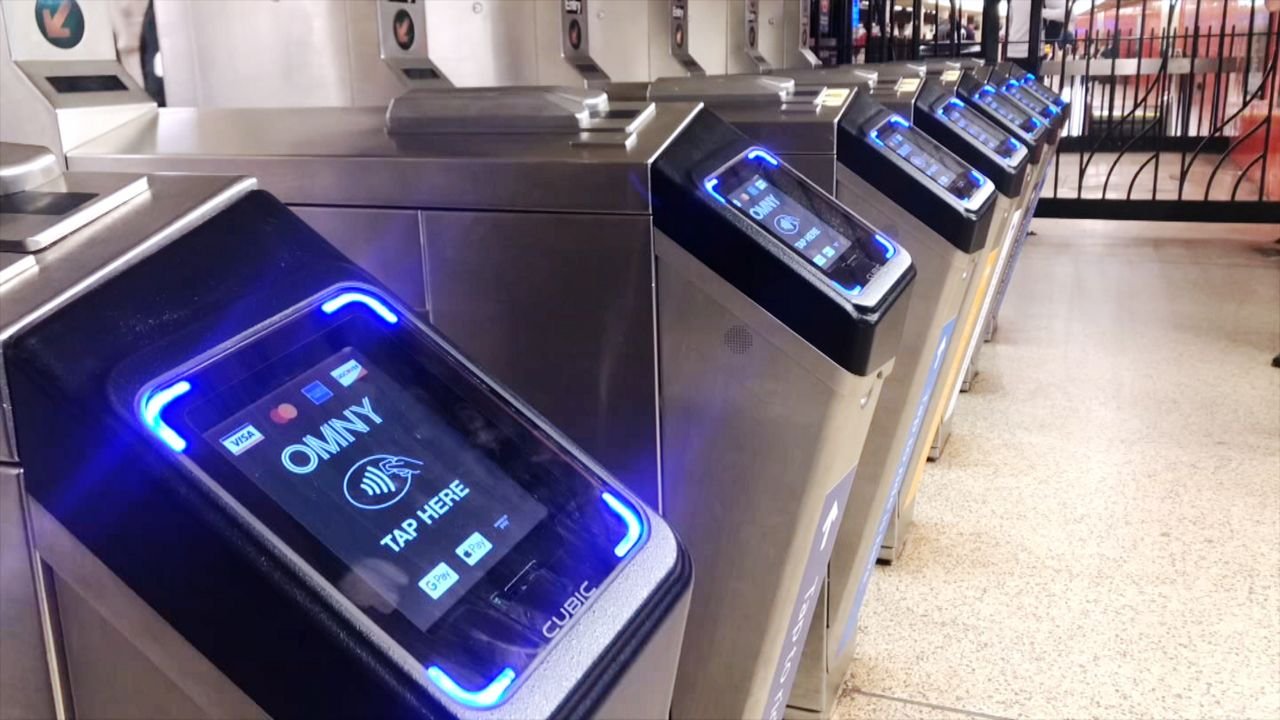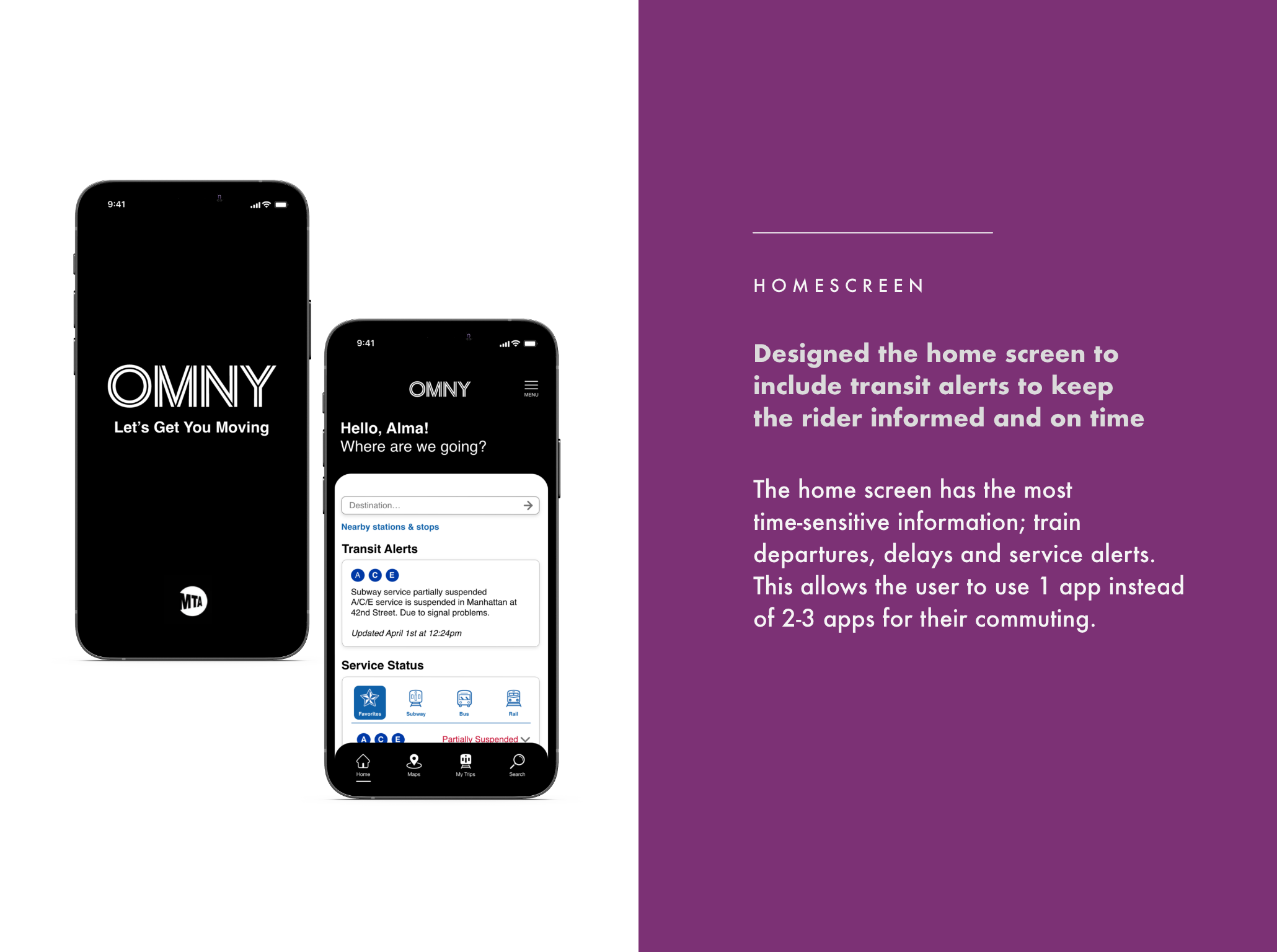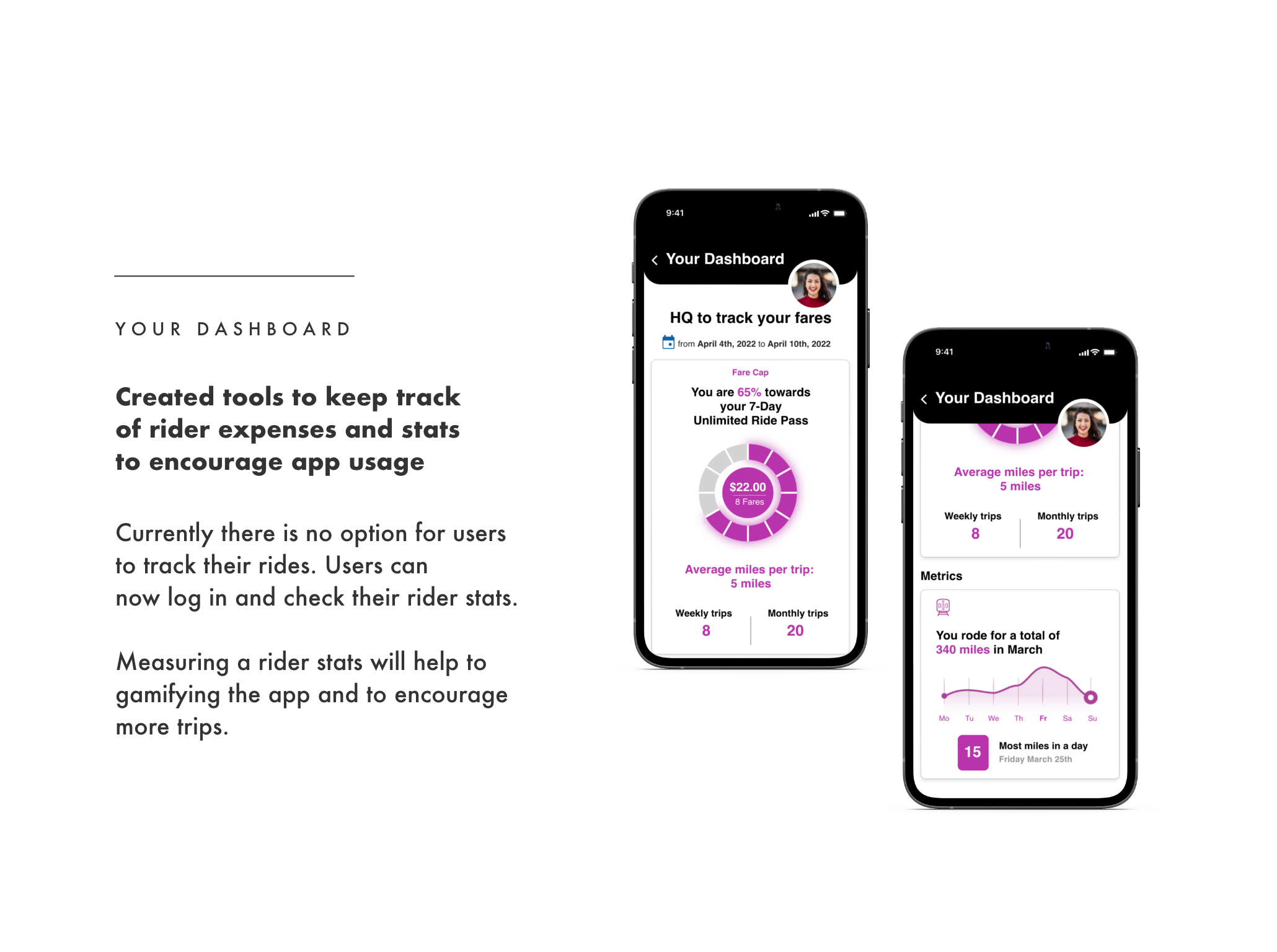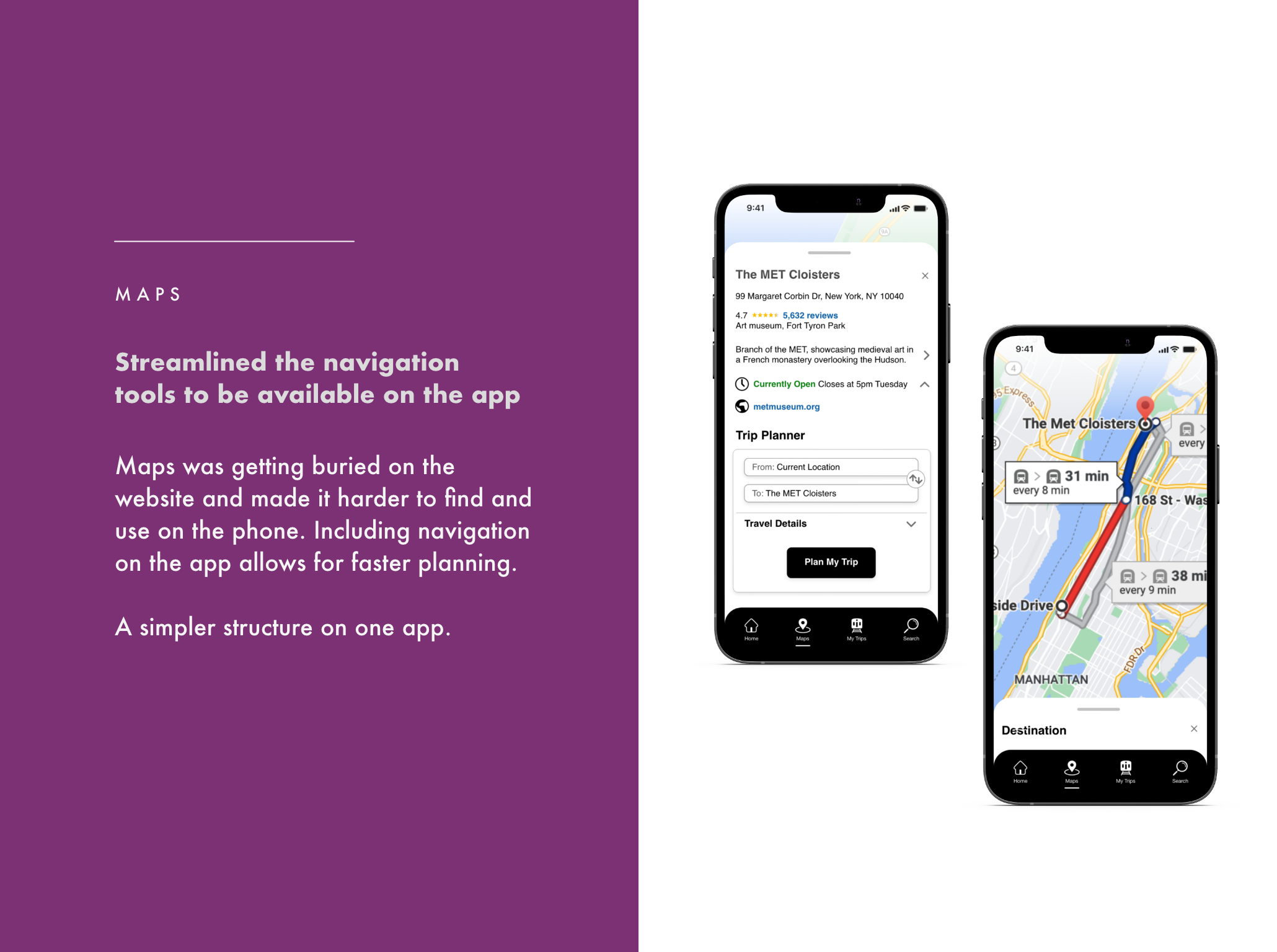Optimizing the NYC public transit’s new tap and go tech into an accessible app for a successful commute.
When using the NYC public transit, people want to quickly plan their trip and purchase tickets. An app that can encompass all of the steps needed to secure a successful commute would be the quintessential tool for the everyday New Yorker.
Background
HYPOTHESIS
With the MetroCard being phased out, riders will need an app to buy tickets and plan their routes. My OMNY app will allow users to tap and go, optimize travel time, keep track of their rides, and bring up-to-the-minute travel alerts to their fingertips.
Image by Pentagram, OMNY Brand Identity
Image by NY1
WHY
“15.7% of all subway and bus riders have migrated to the new system. By 2024 the entire NYC transit system will switch over the OMNY system” - The MTA, March 2022
The timing couldn’t be more appropriate. Currently, most NY transit riders rely on the MetroCard and paper tickets as their primary fare payment method. The MetroCard is notorious for issues: long lines at the vending machines, no available or functioning machines, bent magnetic strips, and more. These factors impact the daily commute of millions of riders. A better option has long been needed.
Design Opportunity
Designing an app centered around New York City's new tap-and-go technology involves creating a seamless user interface that prioritizes speed and convenience for daily commuters. The app must integrate real-time payment processing, support multiple transit modes, and provide instant fare validation to reduce wait times and improve overall transit experience. Incorporating features such as transaction history, balance tracking, and alerts for low funds will enhance user engagement. Emphasis on accessibility and clear navigation ensures the app serves a diverse population, aligning with NYC’s commitment to modernizing public transportation.
Research
When researching for the OMNY app, I gathered MTA system data across the different transit options. This data helped to inform me of how well the current system is performing and how well the new technology is succeeding.
Insights
The app design required rider insights to provide valuable information about the behaviors, preferences, and pain points of individuals using various modes of transportation. By analyzing data from surveys, usage patterns, I can better understand their motivations and challenges riders face. Which is critical for optimizing overall rider satisfaction.
I surveyed five transit riders (ages 30-47) to understand their wants and needs. Their ridership ranges from daily to sporadic, across the different modes NYC transit offers: subway, bus, Metro North, and Long Island Railroad (LIRR) systems.
Concept
TOUCHPOINTS
SKETCHES
WIREFRAMES
Design
KEY MOMENTS
Quick, intuitive features for immediate engagement. Personalized Dashboard shows relevant content and recommendations. Real-Time Notifications keep users informed without overload. Progress Tracking visualizes achievements to motivate users. Regular updates improve performance based on feedback.
These moments foster a cohesive and engaging user experience. I want to seamlessly connect the rider to the transit system, allowing the riders to have access to the latest alerts and directions. Users will get the tools to help them reach their goals and their destinations.
Below are some moments helping to address the pain points noted in the user research.
Takeaways
FOLLOW THE DATA
I surveyed 5 transit riders, ranging in ages from 30-47 to align on goals, pain points, and technical constraints, then used rapid wire framing and easy to use design systems to focus on speed and resources where they mattered most.
WHAT SETS THIS APART
By prioritizing user needs and building trip experiences in mind, I expect the app to improve rider ease during the transition process. And dramatically improve rider information distribution.
All without needing other apps or tools to accomplish this goal.
DESIGNING FOR IMPACT
This project was about solving business and user problems through smart strategy and focused execution.
Started with identifying user pain points both physically and digitally.
Prioritized business goals to ensure a smooth transition from the Metro Card to tap and go.
Designed a streamlined maps navigation to deliver more tools to the rider.
Delivered not only what was required, but what was needed.

